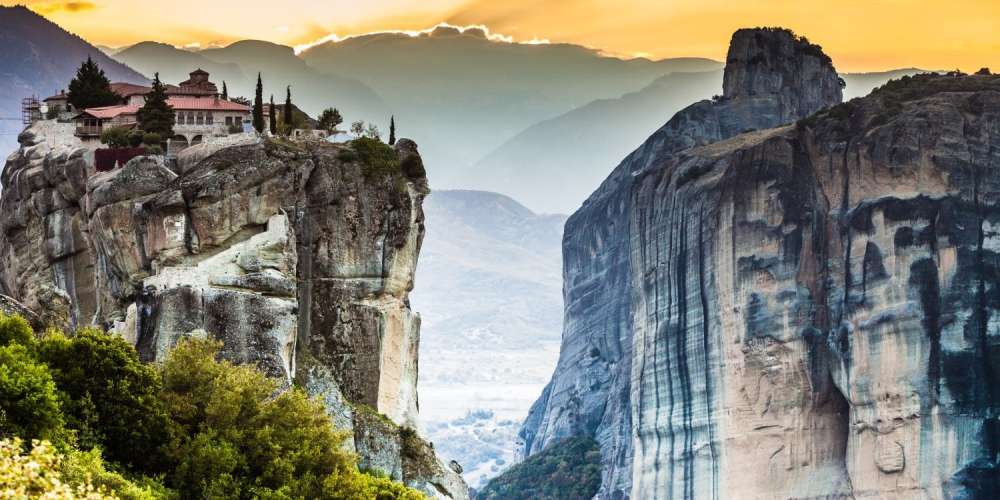
Making a day trip from Athens to Meteora is an exciting adventure, allowing you to explore the stunning monasteries perched atop rocky peaks. There are several ways to visit Meteora from Athens:
If you’re looking for an independent experience, take a regional train to Kalabaka, the town at the base of Meteora. The direct train departs from Athens once a day and completes the journey in less than five hours. Arriving in Kalabaka, you can explore the town and then take a taxi or hike to the monasteries. Keep in mind that taxis are not readily available at the bottom, so pre-arranging transportation is essential. The medieval monks intentionally made Meteora difficult to access, and their mission was certainly accomplished!
Alternatively, slower trains connect Athens and Thessaloniki via Palaiofarsalos. Renting a car and driving to Meteora is the quickest option and allows you to customize your itinerary.
The bus ride takes approximately 10 minutes and costs around €2 to €3. This is a convenient and budget-friendly option. There are 28 weekly buses available.
Duration: 10 min.
Price €2 – €3
Number of weekly buses: 28
Opt for a taxi from Kalabaka to Meteora. The taxi ride covers a distance of about 4.7 kilometers and costs approximately €9 to €12. This is a quicker option if you prefer direct transportation.
Distance: 4.7 km.
Price €9 – €12
For a more adventurous experience, consider walking from Kalabaka to Meteora. The scenic route covers a distance of approximately 3 kilometers and takes around 49 minutes. Enjoy the natural beauty along the way!
Distance: 3 km.
Duration 49 min.
Remember to choose the option that best suits your preferences and schedule. Whether you prefer guided tours or independent exploration, the awe-inspiring Meteora monasteries await your visit!
If you prefer an organized trip in the company of other people, you can book for one of the next train trips:
| Location | What? | Provider | Duration | Price / p. |
|---|---|---|---|---|
| Meteora | From Athens: Meteora Caves & Monasteries Day Trip by Train | Meteora Rocks | 14 h. | € 100.20 |
| Meteora | From Athens: 2-Day Scenic Train Trip to Meteora with Hotel | Meteora Trip | 2 d. | € 180.00 |
Travel by bus through the picturesque countryside to reach Meteora. Upon arriving in **Kalambaka**, visit the medieval monastery complex perched high atop sandstone cliffs. These unique 14th-century monasteries are honored as a **UNESCO World Heritage Site**. Enjoy free time to dine and explore in the town of Kalambaka.
| Location | What? | Provider | Duration | Price / p. |
|---|---|---|---|---|
| Meteora | Athens: Meteora Monasteries & Caves Day Trip & Lunch Option | Visit Meteora | 8 – 14 h. | € 90.75 |
| Meteora | Athens: Meteora Day Trip in English/Spanish & Optional Lunch | Meteora Thrones – Travel Center | 13.5-14 h. | € 79.54 |
| Meteora | From Athens: Full-Day Meteora Tour with Greek Lunch | Meteora Trip | 14 h. | € 84.50 |
| Meteora | Thessaloniki: Full-Day Bus Trip to Meteora | Ammon Express | 11 h. | € 62.70 |
| Meteora | Meteora: Morning Half Day Sightseeing and Monasteries Tour | Meteora Trip | 4 h. | € 43.00 |
While a day trip is possible, spending a night in Kalabaka allows for a more leisurely exploration of this awe-inspiring site. Whichever option you choose, Meteora’s monasteries and dramatic landscapes will leave you in awe!
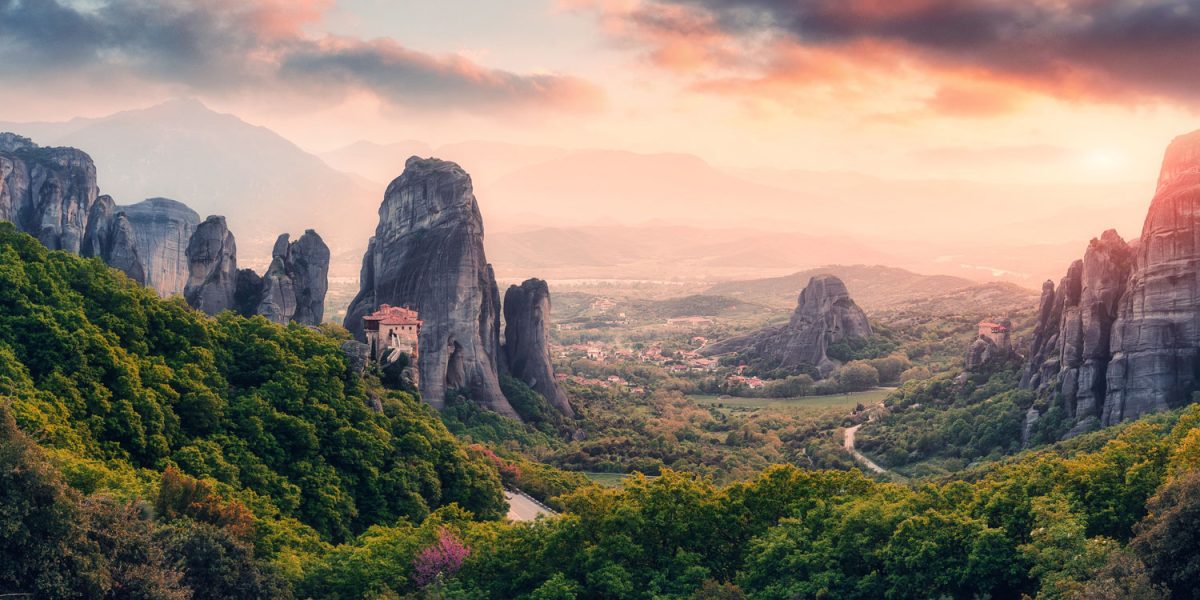
Meteora landscape
This is about a rock formation in the Trikala regional unit, in Thessaly. This rock formation, Meteora (meaning “lofty”) contains one of the largest and steepest complexes of Eastern Orthodox monasteries. Their importance is second only to Mount Athos. There were originally twenty-four monasteries, but only six of these have been preserved. They are built on immense natural pillars and hilly round boulders that dominate the surrounding area. The foundation of the twenty-four monasteries on top of the rocks dates from between the 13th and 14th centuries. Meteora can be reached from the town of Kalabaka on the northwestern edge of the Thessaly plain, near the River Pineios and the Pindus Mountains. In 1988, Meteora was added to the UNESCO World Heritage List. This is because of its exceptional architecture, as well as its religious significance.
These enormous rock columns rise steeply from the ground next to the Pindus Mountains, in western Thessaly. Geologically they have no volcanic origin. They are composed of a mixture of sandstone and conglomerate. This conglomerate was formed over millions of years by deposits of rock, sand and mud from streams that flowed into a delta at the edge of a lake. About 60 million years ago (Paleogene), landslides pushed the seabed upward. This created a high plateau with vertical fault lines. The huge rock pillars were then formed by water and wind weathering and extreme temperatures on the vertical fault lines.
Rock falls are a constant threat to pilgrims and tourists of Meteora. An earthquake with a magnitude of 7 on the Richter scale shook the rocks in 1954. In 2005, such a huge rock fell, closing the access road to Meteora for days.
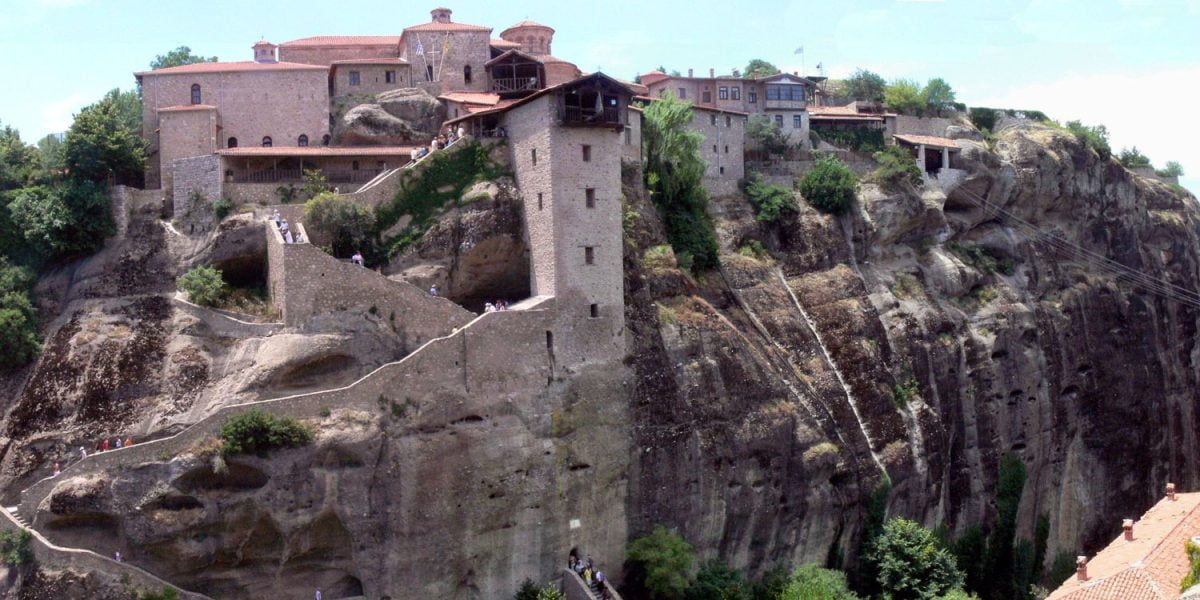
Monastery of Great Meteoron – Janmad, CC BY-SA 2.0, via Wikimedia Commons
This is the oldest and largest of the monasteries of Meteora. Its construction must date back to just before the mid-14th century by a monk from Mount Athos. This was called Saint Athanasios the meteorite. First he built a church in honor of the Virgin Mary. Later he added small cells so that monks could live on top of the rock formations. Saint Athanasios’ successor, Saint Joasaph, continued to build more cells and a hospital, and renovate the churches on top of the rocks. The monastery had its heyday in the 16th century with more than three hundred monks in the cells. Since 2015, three more monks have their residence there.
The monastery has a special layout with many buildings: the katholikon, the hermitage of the first founder, the kitchen, a hospital, and three old churches or chapels. The last are: the Chapel of St. John the Baptist, the Chapel of St. Constantine and Helena, and finally the Chapel of the Virgin Mary.
09:30 to 15:00.
Closed on Tuesdays.
09:30 to 14:00.
Closed on Tuesdays, Wednesdays, and Thursdays.
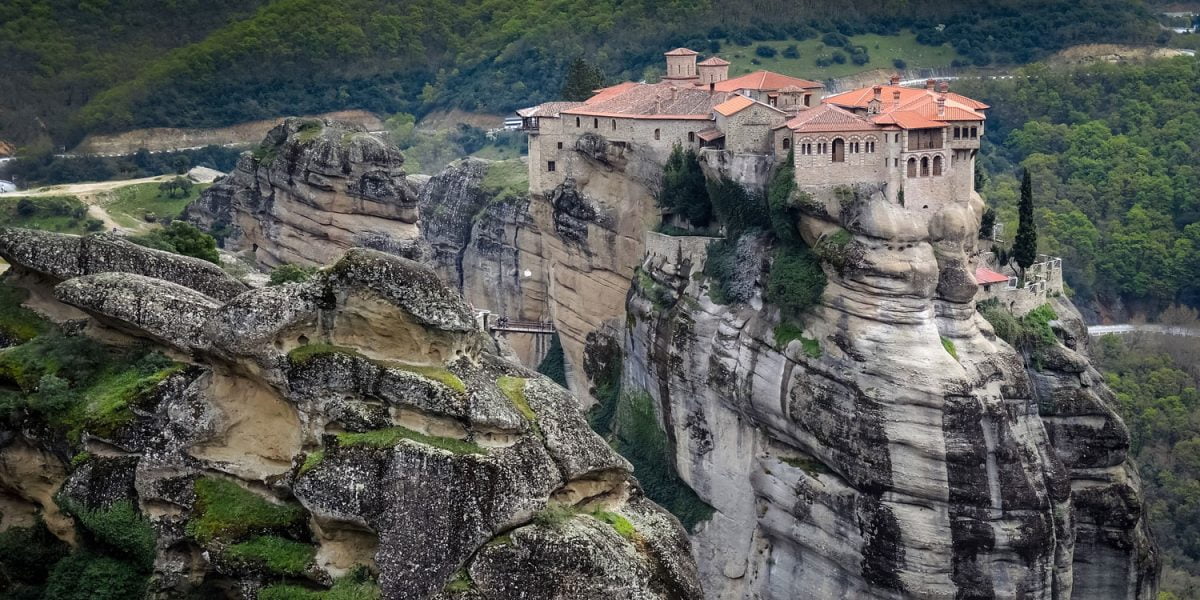
Monastery of Varlaam
The Varlaam Monastery is the second largest monastery in Meteora. A monk named Varlaam climbed the rocks in 1350 and started building the monasteries. He built three churches by hoisting materials up the cliffs. It was only two hundred years after Varlaams that the monastery was regained by two monk brothers from Ioannina. These were Theophanes and Nektarios Apsarades who started rebuilding the churches in October 1517. Hoisting materials to the top of the rock formation took twenty-two years, but the construction itself took only twenty days. Since the 17th century, the number of monks has continuously decreased. As of 2015, there are still seven monks in Varlaam.
The monastery is accessed by a series of ladders along the north side of the rock. The museum is open to travelers and contains a wide range of relics and ecclesiastical treasures.
09:00 to 16:00.
Closed on Fridays.
09:00 to 15:00.
Closed on Thursdays and Fridays.
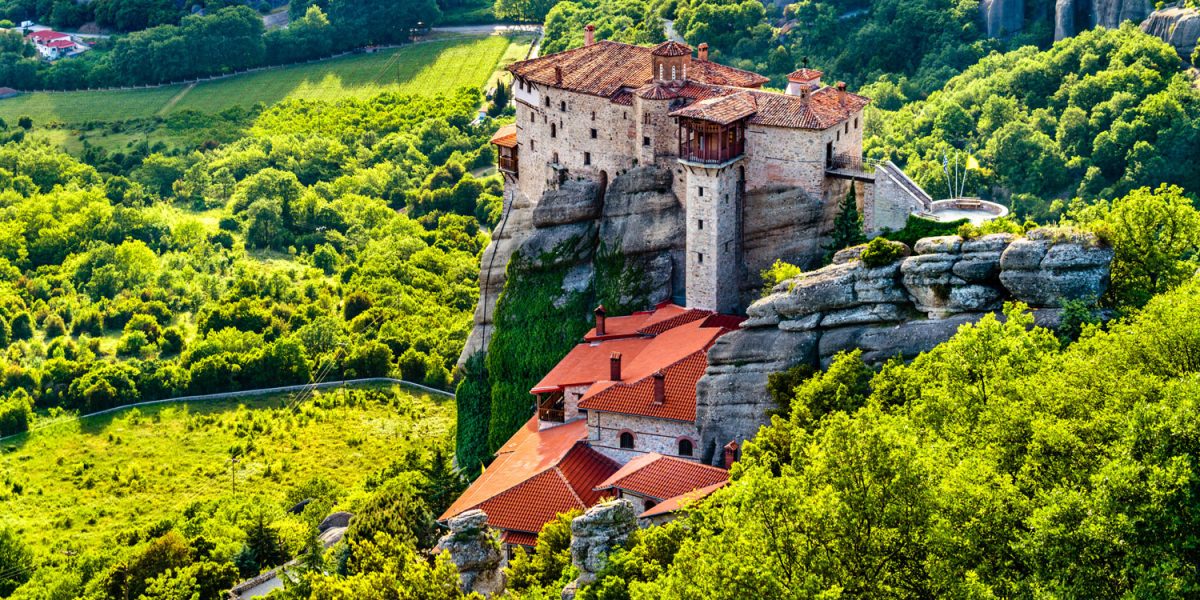
Monastery of Rousanou
The construction of the Rousanou Monastery probably dates back to the 14th century. The cathedral is believed to have been built in the 16th century and later decorated in 1540. The name Rousanou is said to come from the first group of monks who settled on the rock from Russia. The monastery is located at an altitude of 484 meters. Lying in the center of the site, visitors can see the other monasteries, as well as the ruins of the Monastery of St. John the Baptist and the Pantokrator.
09:00 to 15:30 (15:00 on Sundays).
Closed every Wednesday.
09:30 to 14:00.
Closed every Wednesday.
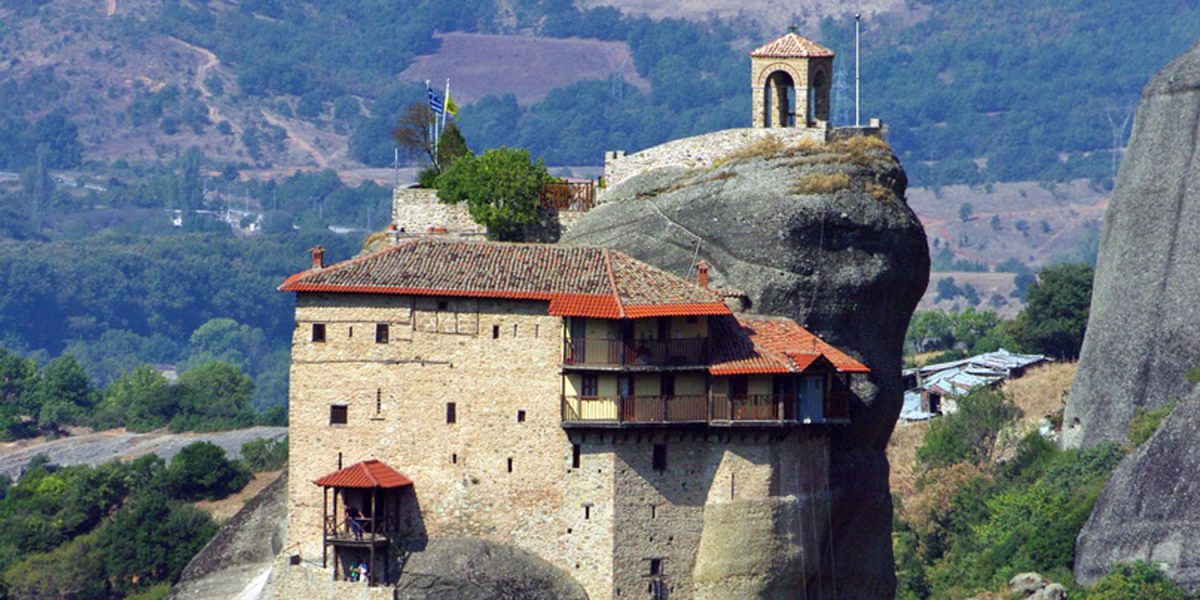
Monastery of St. Nicholas Anapausas – User: Bgabel at wikivoyage shared, CC BY-SA 3.0, via Wikimedia Commons
The Monastery of St. Nicholas Anapausas is located on top of a small narrow rock. Height: +/- eighty meters. First monastery that pilgrims encounter on their way to holy Meteora. Founded at the end of the 14th century and today surrounded by the abandoned and ruined monasteries of Saint John Prodromos, the Pantocrator and the chapel of Panagia Doupiani . The monastery served as a resting place for pilgrims, hence the name Anapausas ‘resting’. Due to the narrow surface, the floors are connected via an internal staircase. Sinterklaas is honored on the second floor where the catholicon is located. The third floor houses the Holy Table and the walls are decorated with frescoes from the 14th century. The monastery was restored in the 16th century and again in the 1960s.
09:00 to 17:00.
The monastery is open every day.
09:30 to 16:30.
The monastery is open every day.
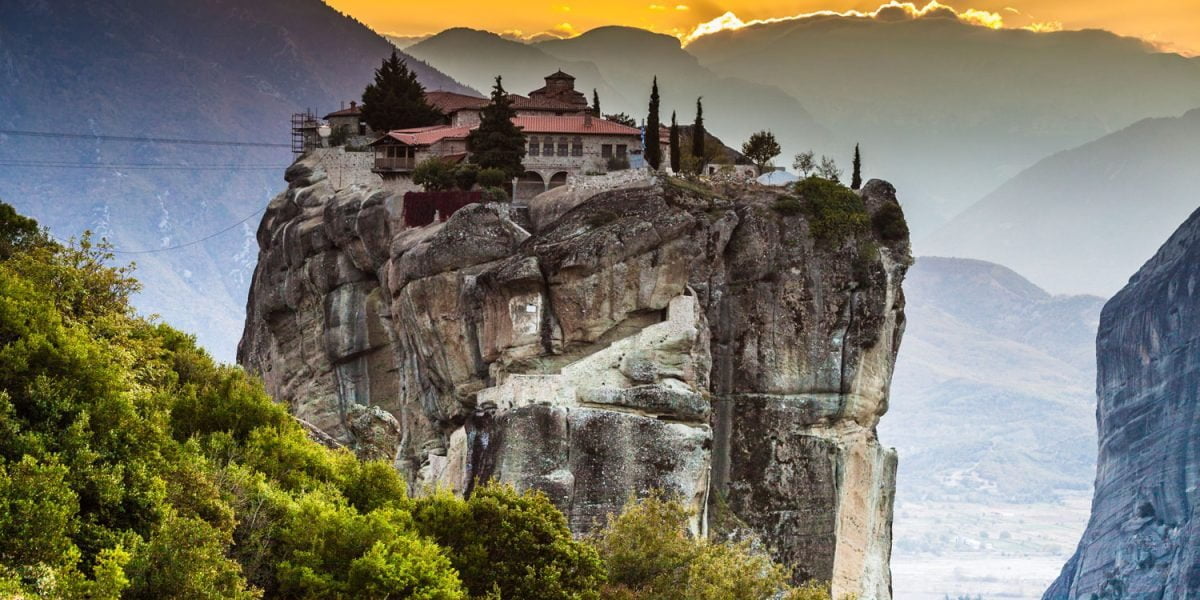
Monastery of the Holy Trinity
The Monastery of the Holy Trinity is believed to have been built in the 14th and 15th centuries. Previously, the ancient Greeks had built hermitages at the foot of the rock walls. In the 14th century, John Uroš moved to the Meteora and built monasteries on top of the rock walls. He offered the shrines as a safe haven in times of political unrest. In 1438, Dometius was said to be the first monk at the site of the Holy Trinity. The actual monastery probably dates from between 1475 and 1476. By the end of the 16th century this was one of the last six monasteries still standing on top of the Meteora.
10:00 to 16:00.
Closed on Thursdays.
10:00 to 16:00.
Closed on Thursdays.
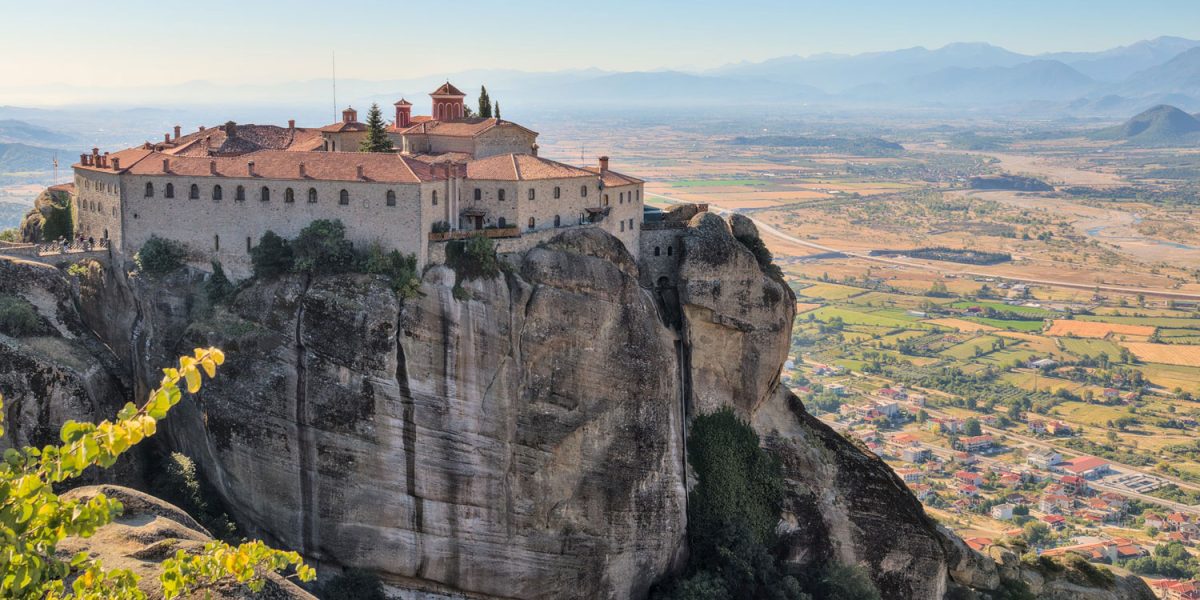
Monastery of St Stephens
St. Stephen Monastery is located on a plateau-like structure. The original monastery is said to have been built in the 14th century, but a new katholikon was built in 1798, making it the newest of all meteorite structures. The monastery consists of many buildings, including a new katholikon, the “hestia” (kitchen), an old dining hall that has since become a museum, and an assortment of rooms with different purposes. These include workrooms for paintings, embroidery, incense making and needlework. The interior of the church was decorated with frescoes for a short period after 1545. However, during the World Wars the monasteries were heavily bombed and looted in the belief that the monks were holding refugees. As of 2015, the Monastery of Saint Stephen is home to 28 nuns after its conversion into a nunnery in 1961.
9:00 to 13:30 and 15:30 to 17:30.
Closed on Mondays.
9:30 to 13:00 and 15:00 to 17:00.
Closed on Mondays.
Remember to check the specific timetables for your visit, as they may vary based on the season. Enjoy your exploration of these remarkable monasteries in the breathtaking Meteora!
When visiting the Meteora monasteries, it’s essential to adhere to a respectful dress code. Here are some guidelines:
Wear clothing that covers your shoulders, chest, and knees. For both men and women, avoid sleeveless tops, short skirts, and shorts. Long pants or skirts are recommended.
Comfortable walking shoes are essential, as you’ll be exploring the monasteries and their surroundings. High heels or sandals with thin soles may not be suitable due to uneven terrain.
Women are often required to wear a headscarf or shawl when entering the monasteries. Some monasteries provide scarves at the entrance if needed.
Maintain a quiet and respectful demeanor within the monasteries. Photography may be restricted in certain areas, so follow any guidelines provided by the monastery staff.
Remember that the monasteries hold spiritual significance, and dressing appropriately shows respect for their traditions and heritage. Enjoy your visit to the awe-inspiring Meteora!
Leave a Reply